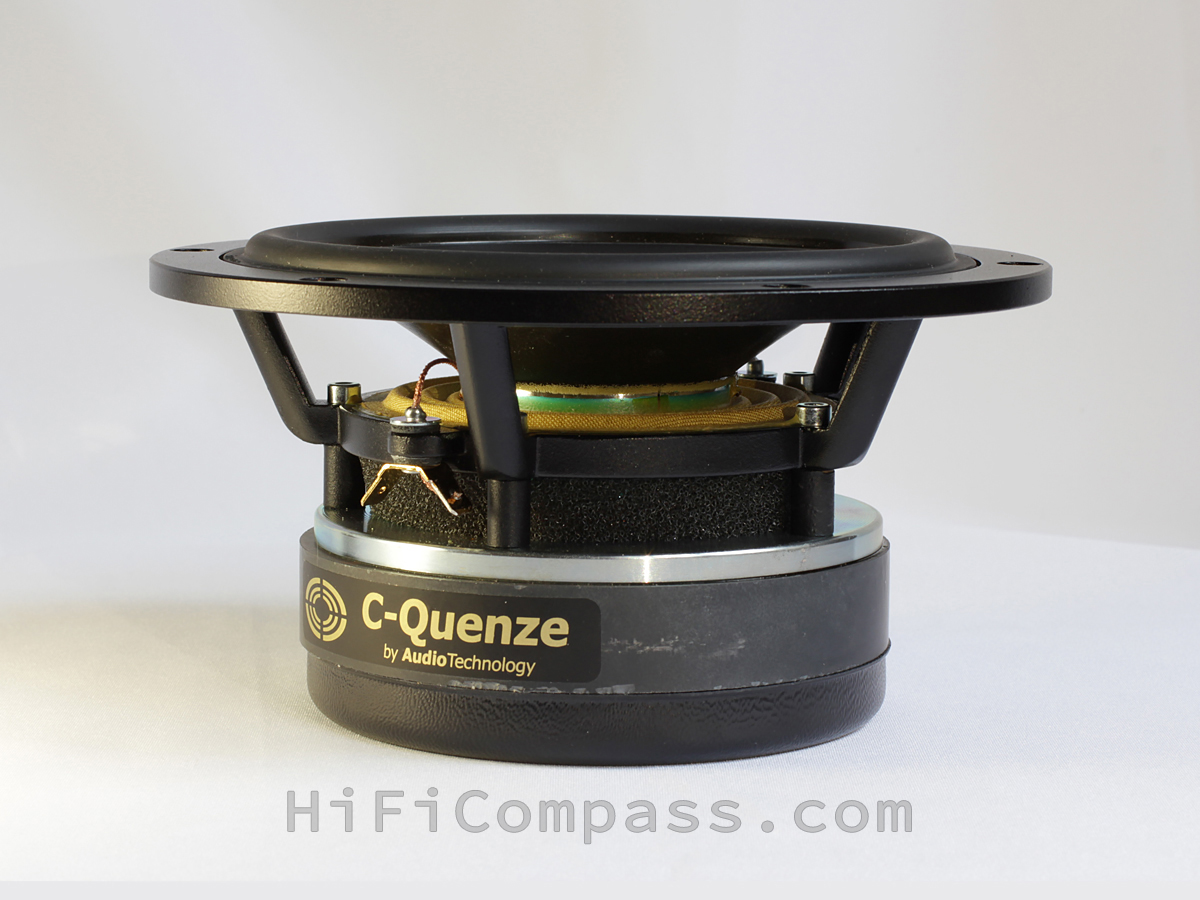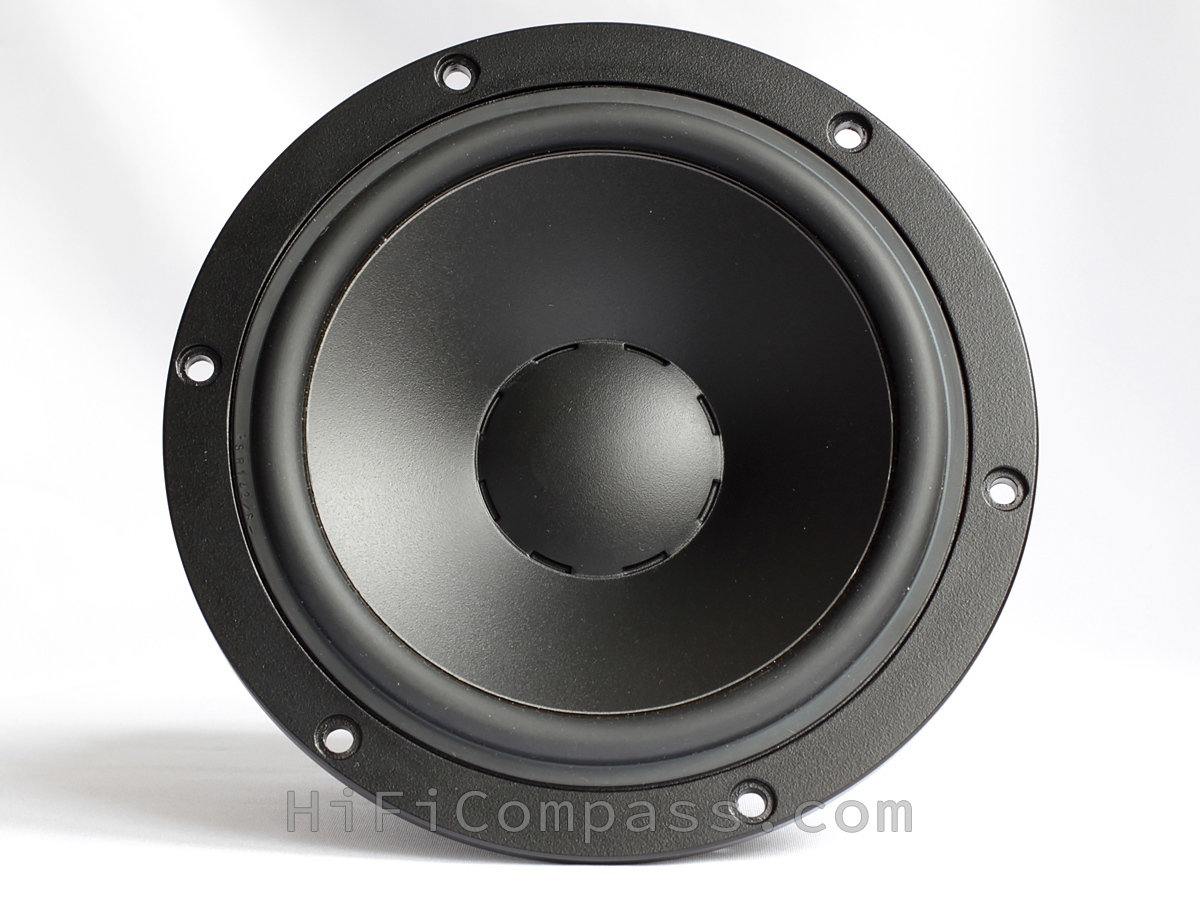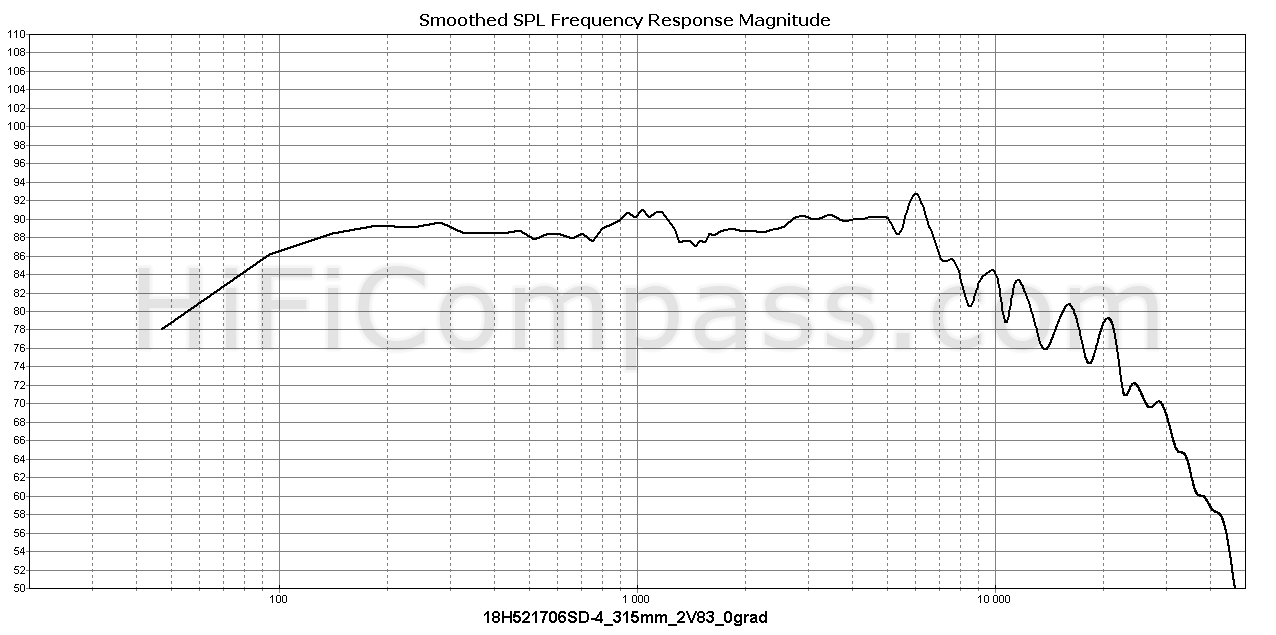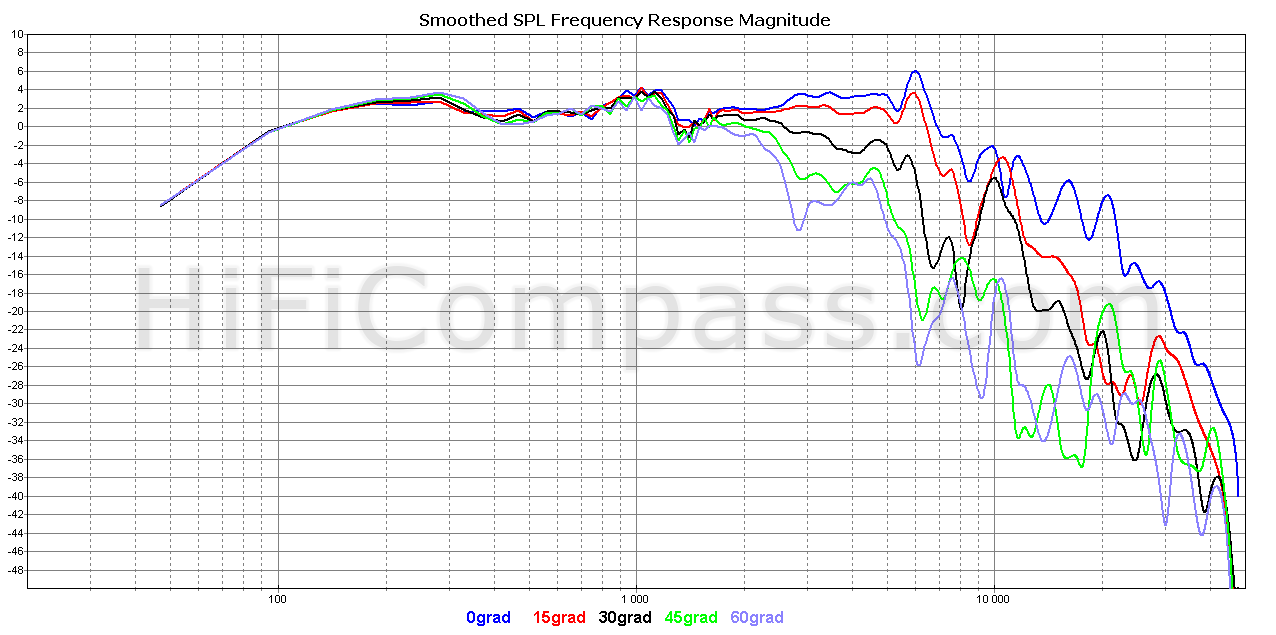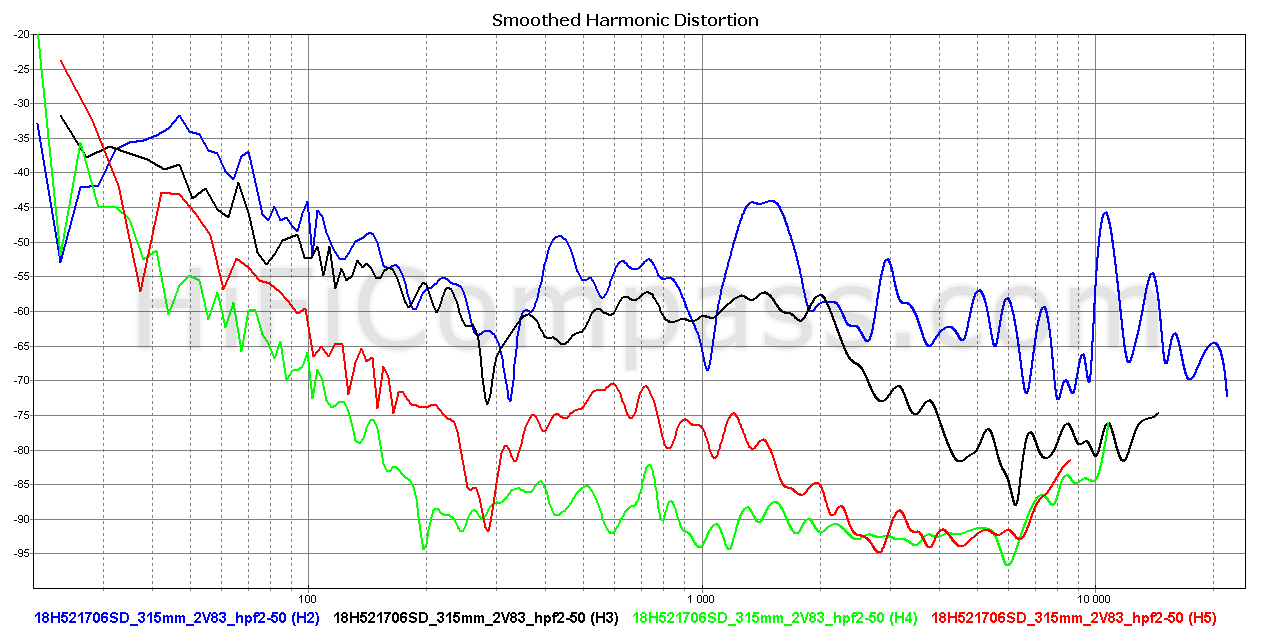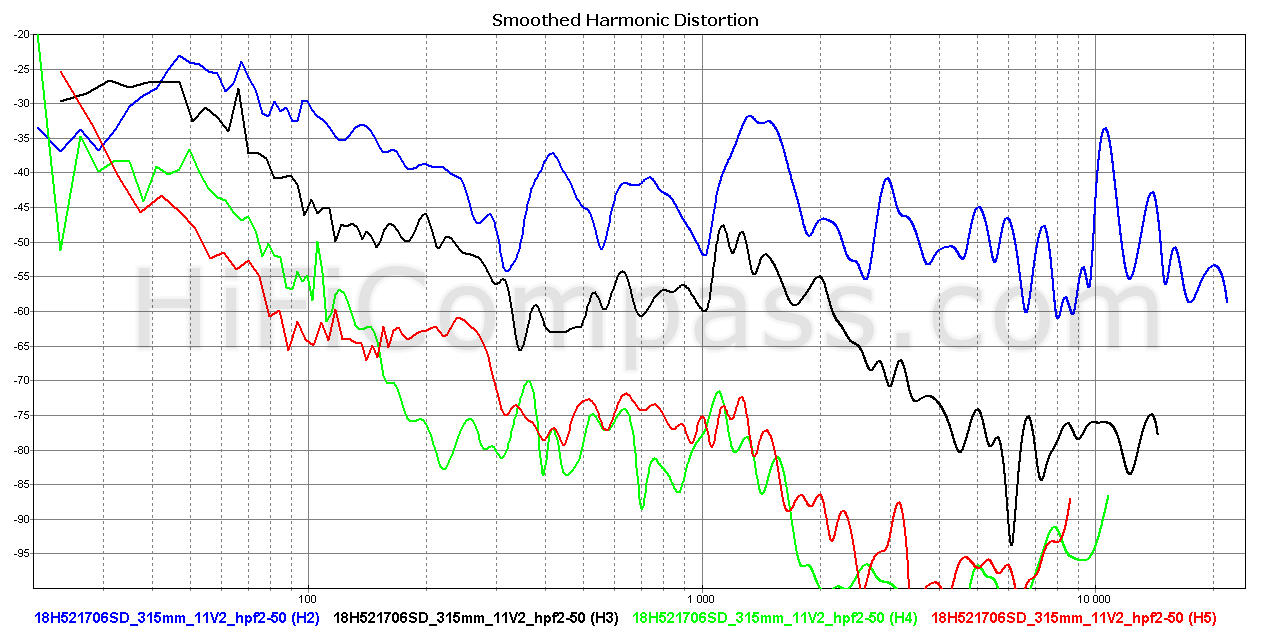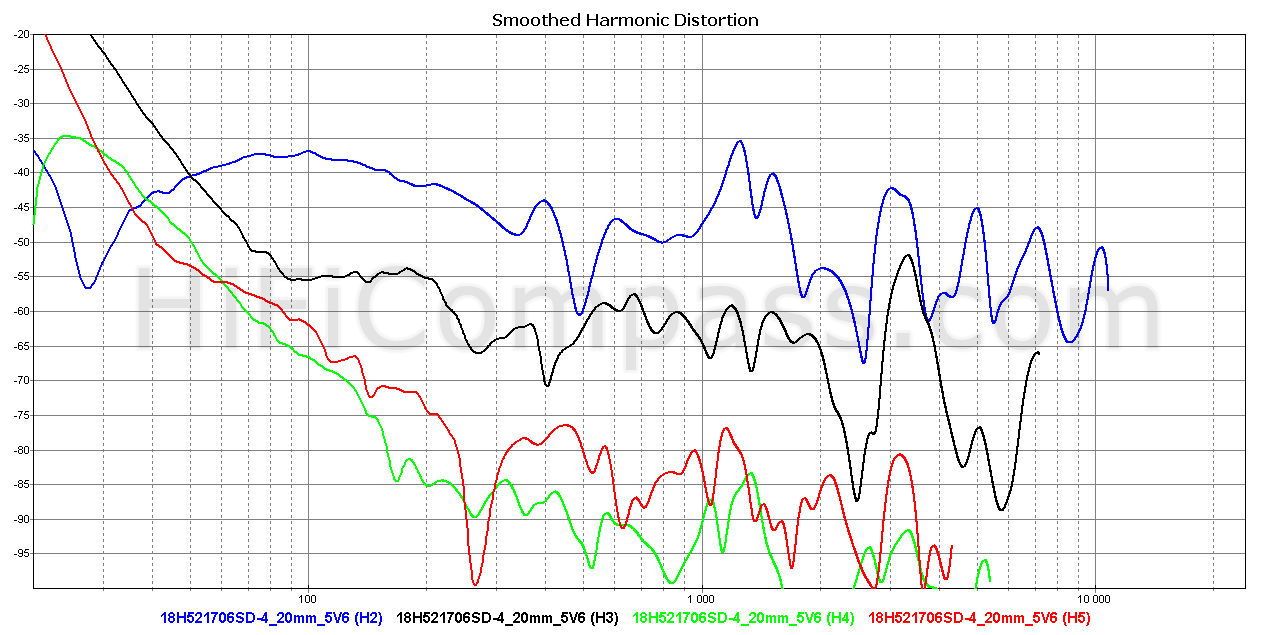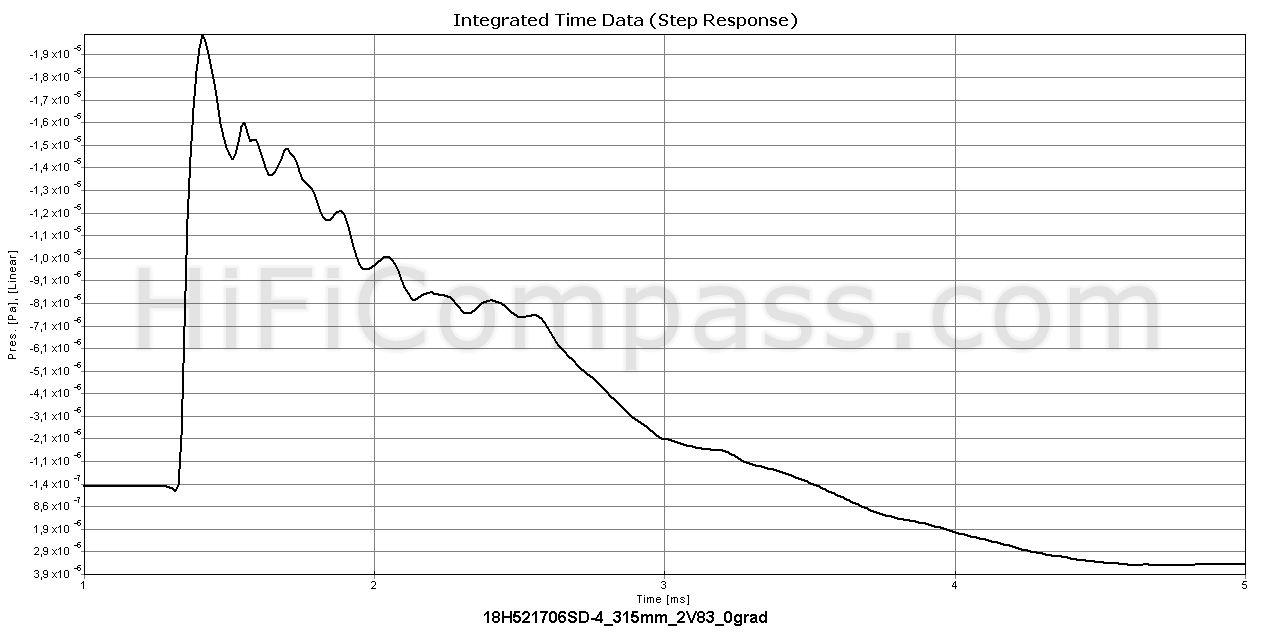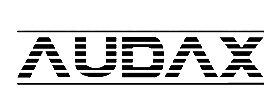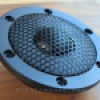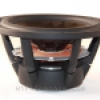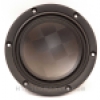HiFiCompass
AudioTechnology 18H521706SD-4
What is on the test bench?
Today on our torture table is 4-Ohm 6-inch midwoofer 18H521706SD-4 from Danish company AudioTechnology. This is a speaker which is not only a pleasure to have under the testing but which give you a pleasure just holding it in the hands too. It is a real High-End exemplar. Not a single detail in it was left unattended by designers.
There are two lines in the AudioTechnology speakers assortment - C-Quenze and FlexUnits. Our speaker belongs to C-Quenze series and differs from FlexUnits colleagues by the one piece molded basket instead of modular one.
The company pays attention to each element of the model name, giving them a special meaning, unlike the faceless catalog numbers of some manufacturers. Here is, for example, the "decoding" of our speaker:
- 18 - basket size, cm
- H - magnet size. In this case 120x52x20 mm
- 52 - voice coil former diameter, mm
- 17 - voice coil height, mm
- 06 - magnet gap height, mm
- SD - type of the magnet system (SymmetricDrive)
- 4 - nominal impedance, Ohm
Perhaps, it reflects the fact AudioTechnology specializes mostly in customer oriented manufacturing, when a customer can order a speaker with almost all parameters he need.
AudioTechnology speakers have not been overlooked by such famous High-End companies as:
- Sonus Faber (Italy)
- Rocport Technologies (USA)
- Audiophil (Germany)
- Peak-Consult (Denmark)
- Vapor Audio (USA)
- Kaiser Acoustics (Germany)
Before testing I have broken-in the midwoofer by applying to it sinusoidal voltage of 12 Volt/20 Hz during an one hour and let it a rest for about 24 hours for the parameters be stabilized.
I planned the testing of the both speakers from the pair but, unfortunately, can't do it. Let's say thanks to negligent workers of customs and delivery service company, who managed irreversibly to bend the membrane of one speaker during the customs checking procedure.
Why do we test this?
The speakers of AudioTechnology company been in my "wishes list" a long ago and the thing is not how interesting from the technical point of view they are. These speakers are known as expensive, elite and not very common in the DIY community, kind of a dark horse, as so very little objective technical information about them in the network. One more reason is the history of AudioTechnology company, rather to say, the history of its founder Ejvind Skaaning - the man who gave birth to such world famous Danish brands as ScanSpeak and Dynaudio in 1970 and 1976 years accordingly. Ejvind Skaaning made a big impact on the concept and appearance of Morel (Israel) speakers.
Yo can learn more about the history of AudioTechnology and Ejvind Skaaning here.
I am very grateful to Per Skaaning, son of Ejvind Skaaning, who is now running the company and who kindly provided a couple of speakers for independent testing. I hope my review will shed some light on their products.
What did the manufacturer state?
Unfortunately, there is no all-in-one technical datasheet containing all the information about the main characteristics of the speaker, electromechanical parameters, on and off axis frequency responses, impedance frequency response, dimensions and measurement conditions. The information is there, but is placed on different pages of the company's website. This is what has been gathered.
The main features are:
- Die cast aluminium chassis
- Gold plated input connectors
- Ventilation under the rear suspension
- Voice coil gap ventilation
- Maximum rear ventilation for minimum compression
- Compressed lightweight aluminium voice coil, wound in hexagonal technique
- Symmetric drive (SD) magnet system
The data above are taken from the website of the company and correspond to 8 Ohm version of the speaker. For our 4 Ohm version they slightly differ:
- DC resistance, Re - 4.2 Ohm
- Resonance frequency, Fs - 35 Hz
- Efficiency (SPL) - 88.5 dB
- Equivalent volume, Vas - 36 liter
- Qms - 1.75
- Qes - 0.33
- Qts - 0.28
Despite the maximum linear excursion is not stated clearly the simple assessment give us the value near +/-5 mm.
Here is what the manufacturer says about the benefits of Symmetric Drive:
- A greater usable frequency range
- Greater thermal power handling
- Lower intermodulation distortion
- Linear rise time no matter where the voice coil is situated in the gap
- A more consistent impedance curve
- Much lower inductance of the voice coil
- Rise time is increased up to a factor 10
- SD makes it possible to have both full bodied bass performance and fast clear midrange
Visual inspection
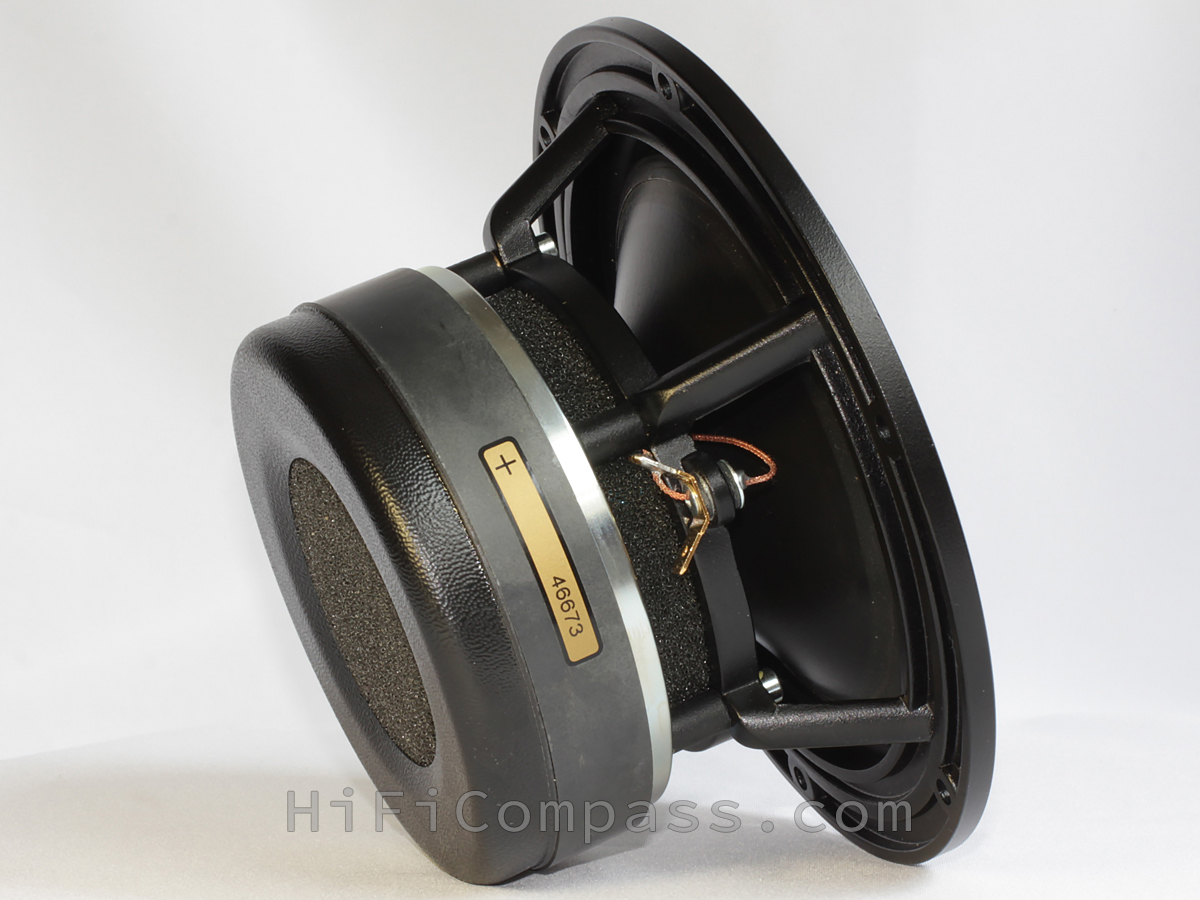 |
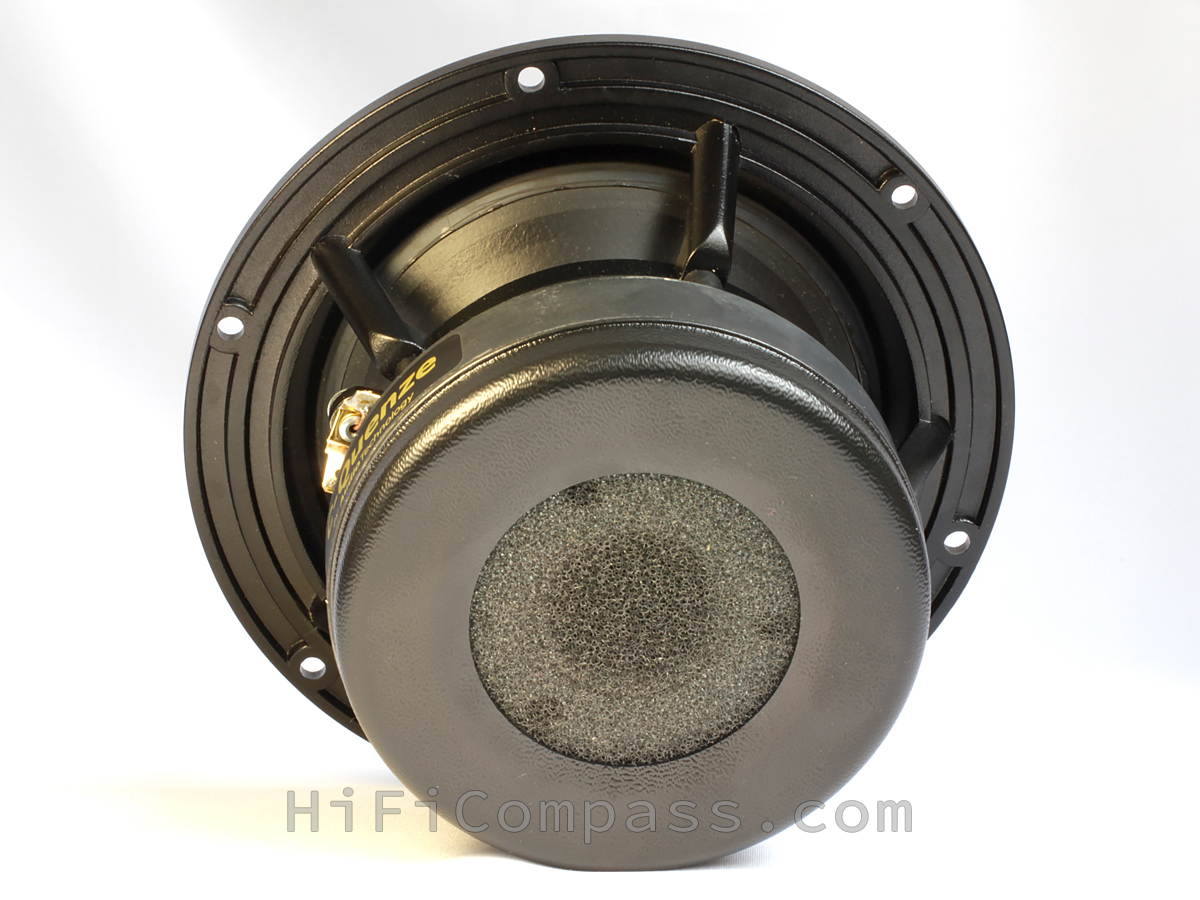 |
Holding in my hands this 6" "baby" I constantly caught myself on the thought - how heavy it is! I was not even too lazy to dig out scales - it turned out to be 2.36 kg, which is more than an average value for a 6"-7" midwoofer. You should be very careful not to drop it from your hands.
The production quality is very good. All the details are matched and joined very tightly, there are no any gaps and skewness between them, no any burrs, scratches and glue marks. The lack of gasket-sealant on the back of the basket flange a little upset me.
The die cast aluminium basket is absolutely inert and doesn't make any ringing when tapping by fingers on it. It is painted with very attractive black semi-gloss powder coating. The gap between the surround edge and the basket flange is the same all around the perimeter. The labels are glued exactly. There are 2 mm deep pockets in the basket flange for mounting screw heads - very useful thing. I never could understand the absence of such elements in the baskets of SEAS speakers and ScanSpeak speakers from their Classic line. Due lacking that pockets the screw heads look on baskets like warts.
There are six ribs and large open windows in-between at the back side of the basket. It helps very much to going sound waves out from back side of the membrane, so, the basket is very acousticaly transparent. There is one interesting detail in the basket construction. It is attached to the magnetic system not by rivets, as most often is the case, or by fastening with screws, but which are deeply buried under the spider and inaccessible. The basket is attached with screws through intermediate cylindrical struts whose heads are easily accessible. This allows, if necessary, to loose the screws and to center the moving system in the magnetic gap. Moreover, you can completely disassemble and assemble the speaker by yourself without taking apart the basket and moving system. This option can be very useful in life.
The surround is very soft and very thin, made of low loss rubber. Its thickness appears to be about 0.4-0.5 mm.
The aluminum former with a diameter of 52 mm follows the membrane. That size is a bit larger comparing to an average value for 6" midwoofer. We can meet a much bigger size of former, like 75 mm in Morel and Dynaudio speakers, for example, but for their constructions such a size is an inevitable consequence of an inverted magnetic system, which is located inside the voice coil former. Such a placement creates difficulties with ventilation and resonant effects under the dust cap space. Much more attention is paid to this problem in the 18H521706SD-4 speaker. At first, the former diameter is smaller, and at second, ventilation under the dust cap space is more intensive both through a large hole in the pole piece and through the holes in the back plate.
The spider is narrow, its working width is about 20 mm only, it has three but deep waves.
The copper leading wires are thin, light, flexible and very good. They are located on opposite sides of the former and it is very good too, as such a symmetrical arrangement introduces minimal radial imbalance into the moving system.
The terminals are gold plated and fixed to the basket very firmly and reliable. It is the best terminals construction I have ever seen. The leading wire passes through a cylindrical rivet-bush and is soldered to one of the tabs of gold-plated terminal plate. The rivet-bush is riveted to the basket mounting eye through a couple of heat-resistant washers. It forms a very solid and heat-resistant fixing. You can safely solder them with a 100 W soldering iron as many times as you need without fear that something will float away.
The top plate of the magnetic system is processed by milling, judging by a cutter traces on its side surface. The space between the top plate and the spider, as well as the hole in the pole piece, is covered with well-blown porous foam, the main purpose of which, as I understand it, is to protect the magnetic gap from getting in it small magnetic and non-magnetic particles.
The magnet is nothing special - made of ferrite.
The back side of the magnetic system is closed with a plastic cap, which holds the foam filter and visually beautifully completes the speaker design.
At the picture you can see all the elements of typical AudioTechnology speaker. The pictures is a section of a 8" woofer from FlexUnits line, but it changes nothing.
On the top of pole piece are seen a felt ring and a copper cap - indispensable attribute of the proprietary Symmetric Drive (SD) magnetic system. Although this is not visible to the naked eye, but according to the manufacturer the voice coil is wound with a hexagonal wire in order to increase the filling density of the magnetic gap with a wire.
At the picture the voice coil former is made of aluminium but AudioTechnology will make for you it of any kind of material - Kapton, titanium and others, no problems. Usually, it is being done for midrange speakers to increase transparency and improve microdynamics due to the elimination of an additional electromagnetic brake in the magnetic gap.
The measured diameter of the basket turned out to be exactly as in datasheet - 180 mm, but the thickness of the basket flange is 6.4 mm instead of the 6 mm stated.
Summing up, we see thoroughly thought-out midwoofer with a flexible construction in the excellent implementation.
Impedance frequency response
The measured parameters are very close to the stated ones:
| Parameter | Stated | Measured |
|---|---|---|
| Re, Ohm | 4.2 | 4.6 |
| Fs, Hz | 35 | 34.3 |
| Vas, liter | 36 | 36.3 |
| Qms | 1.75 | 1.65 |
| Qes | 0.33 | 0.3 |
| Qts | 0.28 | 0.25 |
| Mms, g | 14.6 | 15.6 |
| Efficiency, dB/W (at 1m) | 88.5 | 86.8 dB/W (88.6 dB/2.83 V) |
Taking in account measurement errors, measurement condition difference and speaker parameters variation from batch to batch, it can be considered that the coincidence of the measured parameters to the stated ones is quite good. One exception is the "Efficiency", there is a descripiency between the stated value 88.5 dB at 1 W and the directly measured one 88.6 dB at 2.83 V, which then was recalculated to 86.6 dB at 1 W.
The impedance curve is smooth without any serious bounces and demonstrates linear increasing (in log F scale) towards high frequencies. It says about a good motor with low inductance (should not pay attention to the value that gives the WT3 tester, it is far from the true). Around 1.3 kHz, 3 kHz and 10 kHz there are observed small curve deviations off course due to the edge resonance of the membrane and the spider (1.3 kHz), as well as by a break-up mode of the membrane (3 and 10 kHz). Very good impedance curve in overall.
On-axis frequency response
The measured average sensitivity is 88.5-89 dB. Throughout the whole range the frequency response especially flat. Total deviation in the range from 130 Hz to 5.5 kHz doesn't exceed 3 dB (!). It can be noted a couple of points:
1. In the surround-membrane resonance area 800 - 1300 Hz there is a slight response raising up to 2.5 dB. But a hump is not a deep and it can be easy corrected in a crossover. Audibility of the deeps is less noticeable, but you just do not get all of musical information.
2. There is a very small spike around 6 kHz that will not make a trouble to anyone. After that point slightly wriggling frequency response monotonously falls down.
The absence of any serious resonances in the whole frequency range says about a very good damped mooving system. Very extended flat response and its monotonous falling guarantees uniform tonal balance and not very complex crossover. All this is due to the use of membrane material with high internal damping.
I think it would be appropriate to mention the manufacturer’s comments on the choice of material for membranes. (link, p.4):
Why does Audiotechnology use Polypropylene cones?
|
Off-axis frequency responses
The off-axis behavior demonstrates a uniform and smooth falling down with an increase in the angle of deviation from the axis. The response drop at 2.4 kHz and the angle of 60 degrees does not exceed 6 dB, therefore, it is quite safe to use the speaker up to this frequency.
The off-axis curves here better disclose the surround-edge cone resonance problem in the vicinity of 1.2 kHz.
Harmonic distortion (315 mm)
The harmonic distortion responses above are taken at average sound pressure levels 88.5 dB and 100.5 dB. We are looking here at the frequency range from 150 Hz and higher up only.
At the increasing of signal level the second and fourth harmonics rise monotonous and roughly proportional to the signal level, the odd 3rd and 5th components rise much slower. The harmonic distortion pattern is being almost preserved and the signs of membrane break-up are absent in the whole frequency range. The second harmonic is dominate over the all others, what should favorably affect the speaker sound signature. Near 420 Hz and 1.4 kHz is being observed the 2nd harmonic spike. Around 1.4 kHz it relates to the surround-membrane resonance, but in the 420 Hz area the reason of spike is not so obvious.
In general, the level of non-linear distortion can be characterized as "low" and corresponding to the level of the best 6 "midwoofers on the market.
Harmonic distortion (5mm - 20 mm)
The nonlinear distortion from the very low up to about 200 Hz frequencies are the best to measure in nearfield at distance no more than 20 mm to membrane. The diagram shows the distortion at voltage level 5.6 Volt. It can be seen that under 50 Hz the distortion pattern is broken and high order harmonics dominate over the second one. As for a 6" midwoofer the total harmonic distortion level is "low" and the low frequency limit defined by the distortions can be accepted as 40 Hz, which is very good.
Step response
The step response demonstrates a fast rising. The returning to a resting state is smooth and monotonous with a very small ringing due to the 5 kHz frequency response spike. Very good.
Waterfall
The waterfall lets us see hidden resonances in the moving system, which can't be easy seen in other types of the measurements. Here we can see resonance echoes near 1 kHz and 6 kHz. Their tails are short and after about 2 ms they reach out the threshold of audibility. It should be noted the waterfall's large falling at the first 0.5 ms - it is one more sign of a very good damped membrane and should make its impact on the sounding by the very favorable mean.
Listening impressions
I can tell about my listening impressions only after testing the midwoofers in real loudspeakers, so, let's have patience and wait until my hands will get touched to a project based on these midwoofers.
"How to use" recomendations
The results of assessed modeling of 18H521706SD-4 midwoofer in a vented enclosure are displayed below. It was assumed that a loudspeaker radiated in a 2-pi half-space, the Thiele&Small (T-S) parameters were slightly corrected taking in account their little modification by an active resistance of connecting wires and crossover coils (0.35 Ω in this estimation).
As can be seen from the diagrams, with no using of any tricks but using the speaker just as it is, then it would be very difficult to obtain the lower cutoff frequency below 65 Hz (for QB3 alignment) in a vented enclosure. The reason is low speaker Qts value .
In principle, it is possible to correct the overall Qts in the way of increasing by using an additional resistance. Doing so and losing a little bit in sensitivity, the deeper bass can be pulled out of loudspeakers, but I think it makes no sense in lowering of the cutoff frequency F (-3dB) below 40-45 Hz due to the limitation from the part of nonlinear distortions.
The simulation offers the enclosure volume about 8 liters - it is quite a bit, but there are difficulties in the accommodating in such a small volume a rather long port tube, more than 400 mm, to ensure its minimum required diameter (61 mm). The task is not trivial and you have to compromise, decreasing its length and diameter to 246 mm and 45 mm respectively, what is in turn, increases the chance of the port air noise appearence at high LF signal levels. Alternatively, you can consider a design with a passive radiator.
18H521706SD-4 can be used as a midwoofer in high-quality 2-way loudspeakers and as a midrange unit in large 3-way loudspeakers up to frequencies no less than 2.4 kHz.
The manufacturer itself recommend to use this speaker in a 10-12 liter vented box tuned to about 39 Hz and don’t use an inductor with low resistance, about 0.5 Ohm is low enough, but save ones money and enjoy fuller bass.
What is price and where to purchase it?
You can purchase 18H521706SD-4 speakers directly from the manufacturer at price 239 EURO for a piece excluding VAT and in European online shops too:
- https://www.eltim.eu/en/drive-units/audio-technology/c-quence-series/audio-technology-18-h-52-180mm-bass-midrange-drive-unit/a-7761-20000531
- https://www.audiohum.es/es/componentes-diy-hum/altavoces/medio-grave/audiotechnology-c-quenze-18h521706sd-medio-grave
- http://www.wilaudio.com/fr/c-quenze/869-18h52-1706sd.html
- http://audio-hi.fi/ru/audiotechnology_18h52-p-692.html
It also can be purchased in the USA:
Summary
The measurements confirmed very close correspondence of all the measured parameters with the claimed ones and that speakers belongs to the top league. The speakers features are on par with the ones for the best 6" midwoofers on the market. Thanks to the smooth falling, extended and even frequency response it is a speaker to very easy work with when designing loudspeakers.
So, this is what I can emphasize that AudioTechnology 18H521706SD-4 speaker has:
- average sensitivity - 88.5 dB at 2.83 Volt/1 m
- very even frequency response
- low nonlinear distortions
- superb workmanship
- can be used as a midwoofer in 2-way loudspeakers or as a midrange unit in 3-way ones
- the features among the best speakers on the market in its category
You can get more information about the measurement results here.
Yevgeniy Kozhushko/11.03.2019
CONTACTS
- Ukraine
- (+380) 95 904 7827
- hificompass@gmail.com
LAST NEWS
-
27 Mar 2025
-
04 Mar 2025
-
25 Feb 2025
-
10 Feb 2025


